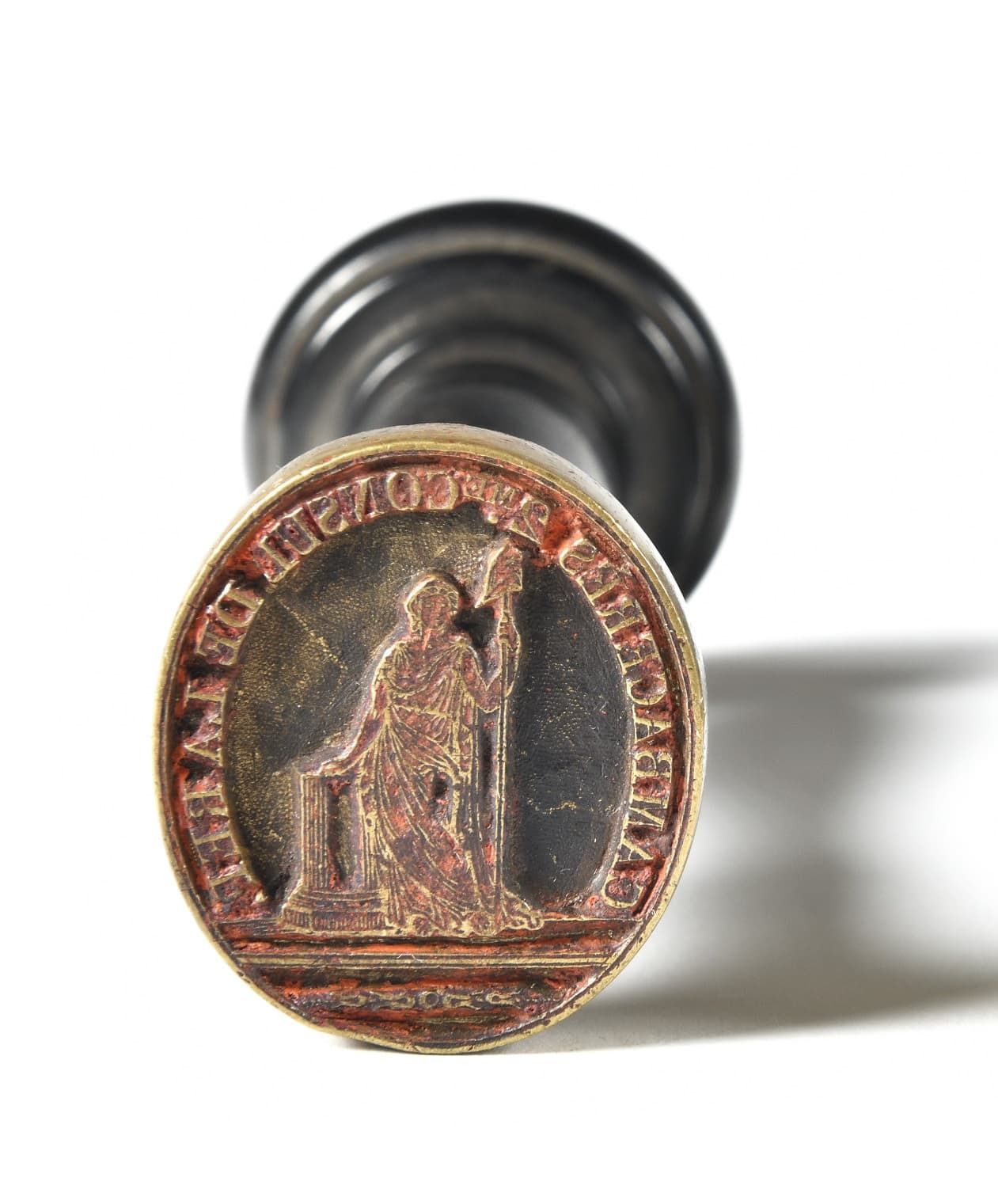Description
RARE INK STAMP OF CAMBACERES, 2ND CONSUL OF THE FRENCH REPUBLIC. Oval, with an allegory holding a lictor beam and a spear surmounted by a Phrygian cap, marked in border " CAMBACERES 2me CONSUL DE LA REP ". 30 x 27 mm. Height : 8,8 cm. Handle in turned ebony. B.E. (Traces of red wax) Consulate period. Biography : Jean-Jacques Régis de Cambaceres (1753-1824) Councillor at the Court of Accounts of Montpellier (1771), editor of the cahiers de la noblesse de Montpellier, president of the criminal court of Hérault (1789), he was elected deputy at the Convention (1792), where he voted, but with reserve, the death of the king (1793). Very quickly, he became involved in the elaboration of the Civil Code, the first drafts of which he presented in August and October 1793. After the 9-Thermidor, he became president of the Assembly and distinguished himself by his moderation towards the Robespierrists and the former Girondins. Member of the Council of Five Hundred, Minister of Justice after the 30-Prairial (June 18, 1799), he was chosen by Sieyès, and at the request of Bonaparte, as second consul. Faced with Lebrun, a man of the Ancien Régime, he embodied the revolutionary tradition. Archchancellor of the Empire (1804), duke of Parma (1808), adviser to Napoleon I, he nevertheless rallied to the Bourbons in 1814, but resumed his functions during the Hundred Days. Exiled in 1815 as a regicide, he returned to France in 1818.
28
RARE INK STAMP OF CAMBACERES, 2ND CONSUL OF THE FRENCH REPUBLIC. Oval, with an allegory holding a lictor beam and a spear surmounted by a Phrygian cap, marked in border " CAMBACERES 2me CONSUL DE LA REP ". 30 x 27 mm. Height : 8,8 cm. Handle in turned ebony. B.E. (Traces of red wax) Consulate period. Biography : Jean-Jacques Régis de Cambaceres (1753-1824) Councillor at the Court of Accounts of Montpellier (1771), editor of the cahiers de la noblesse de Montpellier, president of the criminal court of Hérault (1789), he was elected deputy at the Convention (1792), where he voted, but with reserve, the death of the king (1793). Very quickly, he became involved in the elaboration of the Civil Code, the first drafts of which he presented in August and October 1793. After the 9-Thermidor, he became president of the Assembly and distinguished himself by his moderation towards the Robespierrists and the former Girondins. Member of the Council of Five Hundred, Minister of Justice after the 30-Prairial (June 18, 1799), he was chosen by Sieyès, and at the request of Bonaparte, as second consul. Faced with Lebrun, a man of the Ancien Régime, he embodied the revolutionary tradition. Archchancellor of the Empire (1804), duke of Parma (1808), adviser to Napoleon I, he nevertheless rallied to the Bourbons in 1814, but resumed his functions during the Hundred Days. Exiled in 1815 as a regicide, he returned to France in 1818.
